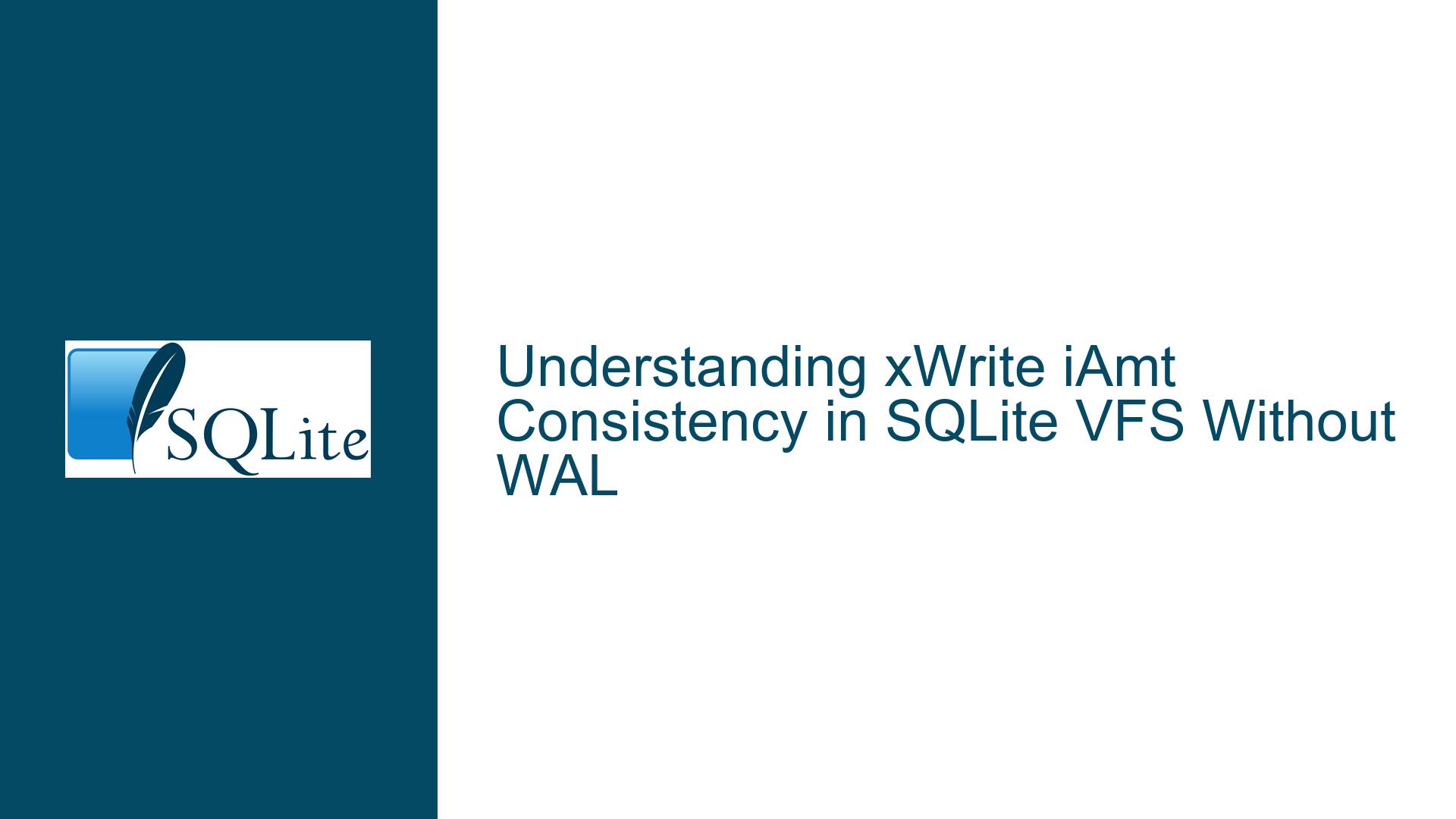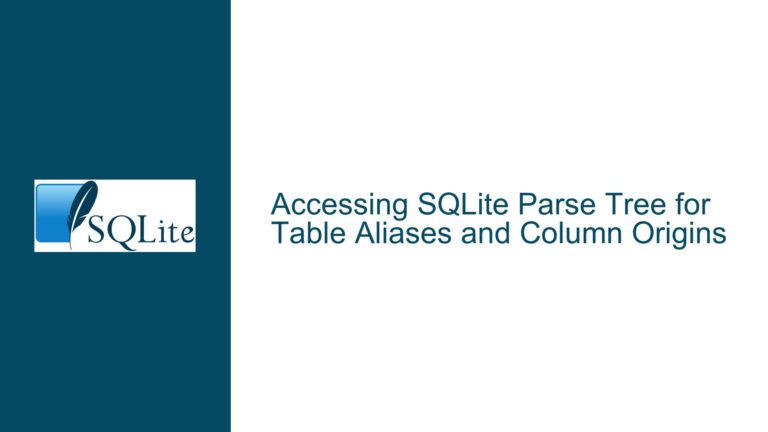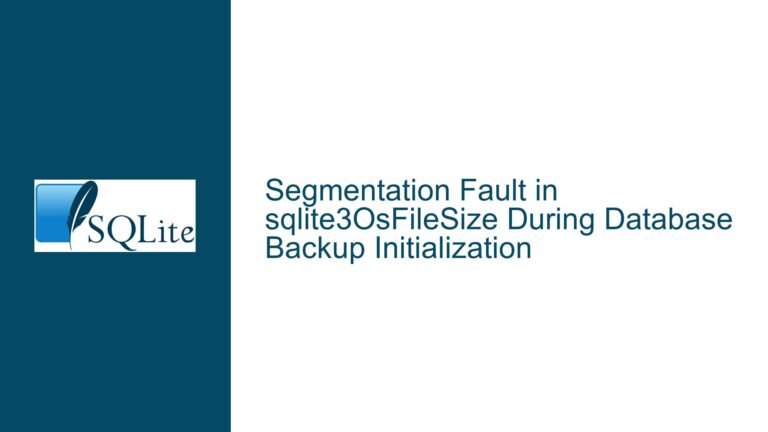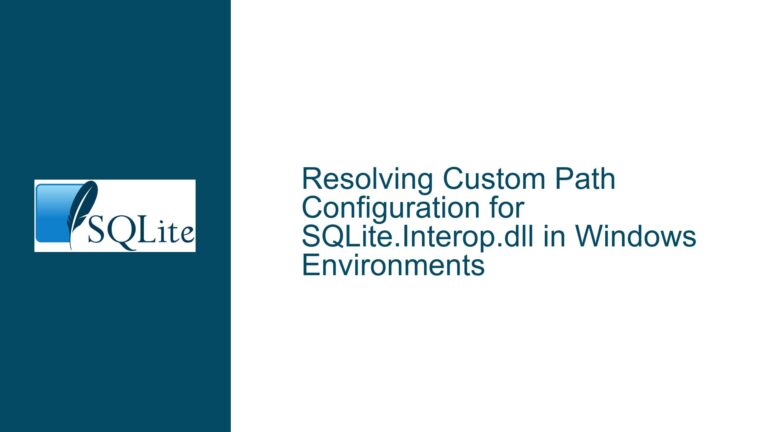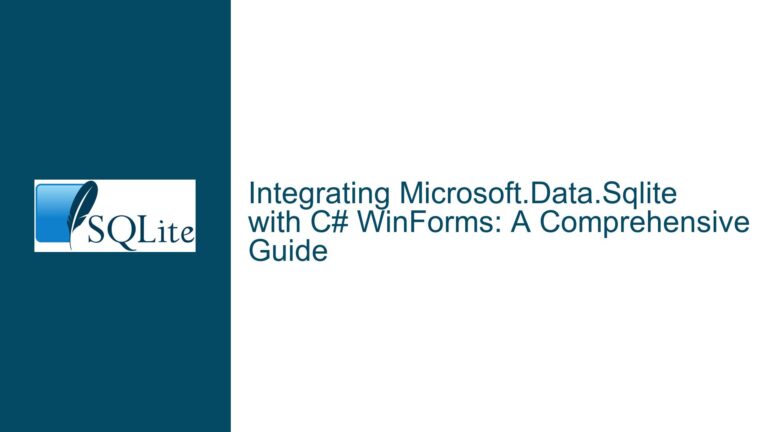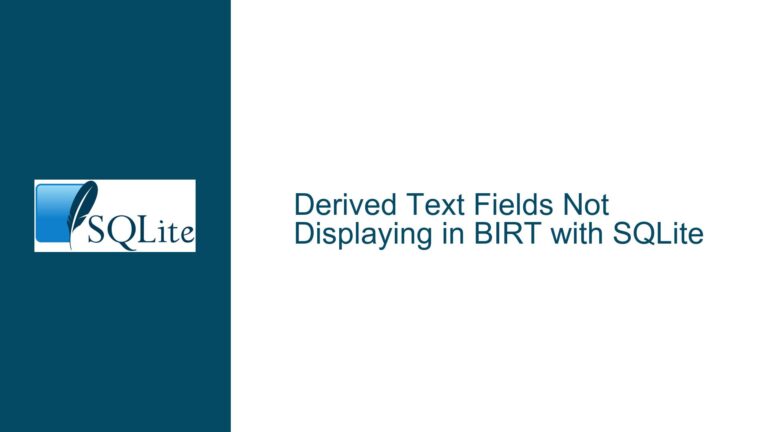xWrite iAmt Consistency in SQLite VFS Without WAL
VFS xWrite Behavior in Non-WAL Modes: Core Mechanics
The SQLite Virtual File System (VFS) layer provides an abstraction for low-level file operations, enabling customization of storage interactions. A critical method in this layer is the xWrite function, responsible for writing data to a database file. Developers implementing custom VFS solutions often encounter scenarios where the iAmt parameter of xWrite—representing the number of bytes to write—appears to strictly match the database page size. This observation is particularly pronounced when operating in modes that disable the Write-Ahead Log (WAL), such as rollback journal modes (e.g., MEMORY or OFF).
At its core, SQLite is designed to write database pages as contiguous, page-aligned blocks. This means that under normal operation, writes to the main database file will align with the configured page size (e.g., 4096 bytes). However, the VFS layer’s flexibility introduces complexity: intermediate VFS shims, application-level overrides, or auxiliary file operations (e.g., temporary files, journals) may deviate from this pattern. The crux of the issue lies in determining whether iAmt will always equal the page size in non-WAL configurations, and how to handle cases where this assumption fails.
Key factors influencing this behavior include:
- SQLite’s Internal Logic: The engine’s commitment to writing full pages to maintain atomicity and consistency.
- VFS Shim Interference: Middleware layers (e.g., encryption, checksum modules) that intercept or modify write requests.
- Direct File Manipulation: Applications bypassing SQLite APIs to directly invoke
xWritewith arbitrary parameters.
Understanding these dynamics is essential for robust VFS implementations that avoid silent data corruption or runtime errors.
Divergence Between iAmt and Page Size: Root Causes
While SQLite’s default behavior enforces page-aligned writes, deviations can arise from three primary sources:
1. Intermediate VFS Shim Modifications
VFS shims act as middleware between SQLite’s core and the underlying storage. For example, the Checksum VFS Shim validates data integrity by appending checksums to each page. This shim filters write operations to apply only to the main database or WAL files, bypassing others (e.g., journals, temporary files). If a custom VFS fails to account for non-main/WAL files, it may incorrectly assume all xWrite calls use the page size.
2. Journaling Modes and Auxiliary Files
In non-WAL modes (e.g., DELETE, MEMORY, OFF), SQLite uses rollback journals or in-memory structures to ensure atomic transactions. While the OFF journal mode eliminates persistent journals, temporary files or in-memory buffers may still trigger xWrite calls with non-page-sized iAmt values. For instance, SQLite’s temp_store configuration can create temporary databases with distinct write patterns.
3. Application-Level Bypass of SQLite APIs
SQLite allows direct access to the sqlite3_file object, enabling applications to invoke xWrite with arbitrary parameters. This bypasses SQLite’s internal safeguards, potentially leading to writes with iAmt values that mismatch the page size. Such usage is rare but possible, particularly in highly customized environments.
Resolving iAmt Inconsistencies: Strategies and Best Practices
To ensure reliable VFS operation, implement the following steps:
Step 1: Validate VFS Shim Stack Configuration
Inspect the VFS registration chain to identify intermediate shims. Use sqlite3_vfs_find() to retrieve the active VFS and traverse its pNext pointer (if applicable). For each shim, analyze its xOpen method to determine which file types it processes. For example, the Checksum VFS Shim skips non-main/WAL files:
if( (flags & (SQLITE_OPEN_MAIN_DB|SQLITE_OPEN_WAL))==0 ){
return pSubVfs->xOpen(pSubVfs, zName, pFile, flags, pOutFlags);
}
If your VFS relies on iAmt matching the page size, ensure it only handles main/WAL files or includes safeguards for other file types.
Step 2: Enforce Page-Size Checks with Graceful Error Handling
Modify your xWrite implementation to validate iAmt against the page size. If a mismatch occurs, return SQLITE_IOERR_WRITE instead of asserting:
static int customXWrite(sqlite3_file *pFile, const void *pBuf, int iAmt, sqlite3_int64 iOfst){
CustomFile *p = (CustomFile*)pFile;
if( (p->flags & SQLITE_OPEN_MAIN_DB) && iAmt != p->pageSize ){
return SQLITE_IOERR_WRITE;
}
// Proceed with write
}
This approach prevents undetected data corruption while accommodating non-database files.
Step 3: Test Across Journal Modes and File Types
Execute comprehensive tests using different journal modes (PRAGMA journal_mode) and temporary storage settings (PRAGMA temp_store). Monitor xWrite calls for:
- Main database files
- WAL files (if enabled)
- Rollback journals (
-journal) - Temporary files (
-temp)
Use strace (Linux) or Process Monitor (Windows) to trace system calls and correlate them with SQLite operations.
Step 4: Mitigate Direct xWrite Invocations
If your environment allows untrusted applications, restrict direct access to sqlite3_file handles. Wrap SQLite APIs to enforce write policies or use a dedicated VFS shim to validate parameters before passing them to lower layers.
Step 5: Leverage SQLite’s Built-In Diagnostics
Enable debugging features like sqlite3_file_control() with SQLITE_FCNTL_ERROR_CODE to log mismatched iAmt values. Combine this with error logging in your VFS to identify offending callers.
By systematically addressing these areas, you can build a VFS that robustly handles iAmt variations while maintaining compatibility with SQLite’s operational guarantees.
This guide provides a foundation for diagnosing and resolving xWrite inconsistencies, emphasizing proactive validation and adaptive error handling. For further reading, consult SQLite’s VFS Documentation and the Checksum VFS Shim source code.
